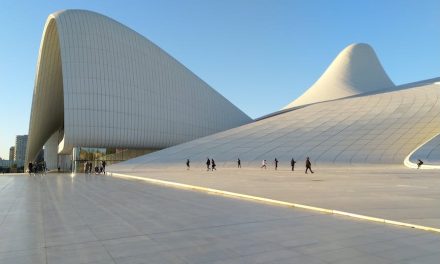Table of Contents
- Introduction
- Traditional Values in Arab Leadership: Exploring the Influence of Cultural Heritage
- Modern Approaches to Arab Leadership: Adapting to Global Trends
- The Role of Communication in Arab Leadership: Balancing Tradition and Technology
- Women in Arab Leadership: Breaking Stereotypes and Embracing Change
- Q&A
- Conclusion
“Discover the Essence of Arab Leadership: Embracing Tradition, Embracing Modernity”
Introduction
“Unveiling the Arab Leadership Style: A Blend of Tradition and Modernity”
The Arab world is known for its rich cultural heritage and deep-rooted traditions. Within this context, the leadership style in Arab countries reflects a unique blend of tradition and modernity. This article aims to explore and shed light on the distinctive characteristics of Arab leadership, highlighting how it combines traditional values with contemporary approaches. By understanding this blend, we can gain valuable insights into the dynamics of leadership in the Arab world and its impact on various aspects of society.
Traditional Values in Arab Leadership: Exploring the Influence of Cultural Heritage

Unveiling the Arab Leadership Style: A Blend of Tradition and Modernity
Traditional Values in Arab Leadership: Exploring the Influence of Cultural Heritage
Leadership styles vary across different cultures, and the Arab world is no exception. Arab leadership is a unique blend of tradition and modernity, shaped by the rich cultural heritage of the region. Understanding the traditional values that underpin Arab leadership is crucial for comprehending the dynamics of power and authority in this context.
One of the key aspects of Arab leadership is the emphasis on family and tribal ties. In Arab societies, family and kinship networks play a significant role in shaping leadership structures. The concept of “wasta,” or connections, is deeply ingrained in Arab culture and often determines one’s access to positions of power. This reliance on familial and tribal networks can be seen as a manifestation of the collectivist nature of Arab societies, where loyalty and trust are highly valued.
Another traditional value that influences Arab leadership is the concept of “shura,” or consultation. Arab leaders often seek the input and advice of their advisors and subordinates before making decisions. This participatory approach to leadership is rooted in the Islamic tradition, which places great importance on consensus-building and collective decision-making. By involving others in the decision-making process, Arab leaders aim to foster a sense of ownership and commitment among their followers.
Furthermore, Arab leadership is characterized by a strong sense of honor and dignity. Arab leaders are expected to uphold the values of integrity, honesty, and respect. This emphasis on personal honor is deeply rooted in Arab culture and is closely tied to notions of reputation and social standing. Arab leaders are expected to act with integrity and to protect the honor of their families and tribes. This emphasis on honor can sometimes be seen as a barrier to change and innovation, as leaders may be reluctant to take risks that could potentially damage their reputation.
While traditional values continue to shape Arab leadership, the region has also witnessed significant modernization and globalization in recent decades. Arab leaders are increasingly exposed to Western management practices and are incorporating elements of modern leadership styles into their approach. This blending of tradition and modernity is evident in the growing emphasis on meritocracy and professional qualifications in Arab leadership. Many Arab countries have implemented reforms to promote transparency, accountability, and good governance, aligning their leadership practices with international standards.
Moreover, the rise of social media and digital communication has had a profound impact on Arab leadership. Arab leaders are now more accessible to their followers, and social media platforms have become important tools for engaging with the public and shaping public opinion. This shift towards a more open and transparent leadership style reflects the changing dynamics of power in the Arab world.
In conclusion, Arab leadership is a complex blend of tradition and modernity. Traditional values such as family and tribal ties, consultation, and honor continue to shape Arab leadership practices. However, the region has also embraced elements of modern leadership styles, incorporating meritocracy, professionalism, and transparency. Understanding the interplay between tradition and modernity is crucial for comprehending the dynamics of power and authority in the Arab world. As the region continues to evolve, Arab leaders will need to navigate the delicate balance between preserving cultural heritage and embracing the demands of a rapidly changing world.
Modern Approaches to Arab Leadership: Adapting to Global Trends
Unveiling the Arab Leadership Style: A Blend of Tradition and Modernity
Modern Approaches to Arab Leadership: Adapting to Global Trends
Leadership styles vary across cultures, and the Arab world is no exception. Arab leadership has traditionally been characterized by a blend of tradition and modernity, reflecting the unique cultural and historical context of the region. In recent years, however, there has been a growing recognition of the need to adapt to global trends and incorporate modern approaches to leadership. This article explores the modern approaches to Arab leadership and how leaders in the region are navigating the challenges and opportunities of a rapidly changing world.
One of the key aspects of modern Arab leadership is the recognition of the importance of inclusivity and diversity. In the past, leadership positions were often dominated by a select few, typically from privileged backgrounds. However, there has been a shift towards a more inclusive leadership style that values diversity and promotes equal opportunities for all. This shift is driven by the recognition that diverse perspectives and experiences can lead to better decision-making and innovation.
Another important aspect of modern Arab leadership is the emphasis on transparency and accountability. In the past, leaders in the region often operated in a closed and secretive manner, making decisions behind closed doors without consulting their subordinates or the wider public. However, there is now a growing demand for transparency and accountability, with leaders being expected to justify their decisions and be responsive to the needs and concerns of their constituents. This shift is driven by the increasing influence of social media and the democratization of information, which has made it harder for leaders to operate in secrecy.
Furthermore, modern Arab leaders are increasingly recognizing the importance of adaptability and flexibility in a rapidly changing world. The Arab world is undergoing significant social, economic, and political transformations, and leaders need to be able to navigate these changes effectively. This requires a willingness to embrace new ideas, technologies, and ways of doing things, as well as the ability to learn from past mistakes and adjust strategies accordingly. Leaders who are able to adapt and evolve are more likely to succeed in a globalized and interconnected world.
In addition, modern Arab leaders are also focusing on building strong relationships and partnerships with other countries and organizations. In an increasingly interconnected world, no country can thrive in isolation, and leaders in the Arab world are recognizing the importance of collaboration and cooperation. This includes forging alliances with other countries, participating in international organizations, and engaging in diplomatic efforts to address regional and global challenges. By building strong relationships and partnerships, Arab leaders are able to leverage the resources and expertise of others to achieve their goals.
In conclusion, the modern approaches to Arab leadership reflect a blend of tradition and modernity. Arab leaders are increasingly embracing inclusivity, transparency, adaptability, and collaboration as key principles of effective leadership. By incorporating these modern approaches, Arab leaders are better equipped to navigate the challenges and opportunities of a rapidly changing world. As the Arab world continues to evolve, it is likely that the leadership styles will continue to adapt and evolve as well, reflecting the unique cultural and historical context of the region.
The Role of Communication in Arab Leadership: Balancing Tradition and Technology
The Arab world is known for its rich cultural heritage and deep-rooted traditions. These traditions have greatly influenced the leadership style in the region, which is a unique blend of tradition and modernity. In this article, we will explore the role of communication in Arab leadership and how leaders in the region balance the use of traditional communication methods with modern technology.
Communication plays a crucial role in any leadership style, and Arab leaders are no exception. However, due to the cultural context, communication in the Arab world is often influenced by traditional values and customs. In Arab societies, respect for authority and hierarchy is highly valued, and this is reflected in the way leaders communicate with their subordinates. Leaders are expected to be authoritative and assertive, and their communication style often reflects this.
Traditional communication methods, such as face-to-face meetings and personal interactions, are highly valued in Arab leadership. These methods allow leaders to establish personal connections with their subordinates and build trust and loyalty. In Arab culture, personal relationships are considered essential in business and leadership, and leaders often rely on these relationships to get things done. This emphasis on personal connections can sometimes slow down decision-making processes, as leaders prioritize building relationships over efficiency.
However, in recent years, the Arab world has witnessed a rapid technological advancement, and this has had a significant impact on communication in leadership. Modern technology, such as email, video conferencing, and social media, has become increasingly prevalent in the Arab business world. Arab leaders are now using these tools to communicate with their subordinates, especially in large organizations where face-to-face interactions may not always be feasible.
The use of modern technology in Arab leadership has brought about several benefits. It has increased the speed and efficiency of communication, allowing leaders to make decisions more quickly. It has also facilitated communication across different locations, making it easier for leaders to manage geographically dispersed teams. Additionally, modern technology has enabled leaders to reach a wider audience and engage with stakeholders on a global scale.
However, the integration of modern technology into Arab leadership has not been without challenges. One of the main challenges is striking a balance between tradition and technology. Arab leaders must navigate the fine line between embracing modern communication methods and maintaining the cultural values and traditions that are deeply ingrained in their leadership style. They must ensure that the use of technology does not undermine the importance of personal relationships and face-to-face interactions.
To overcome these challenges, Arab leaders are adopting a hybrid approach to communication. They are using modern technology to complement traditional communication methods, rather than replacing them. For example, leaders may use email or video conferencing for routine communication, but still prioritize face-to-face meetings for important decisions or sensitive discussions. This approach allows leaders to leverage the benefits of modern technology while preserving the cultural values and traditions that are integral to Arab leadership.
In conclusion, communication plays a vital role in Arab leadership, and leaders in the region have found a way to balance tradition and modernity in their communication style. They recognize the importance of personal relationships and face-to-face interactions, while also embracing modern technology to enhance efficiency and reach a wider audience. By adopting a hybrid approach to communication, Arab leaders are able to navigate the complexities of their cultural context while staying connected in an increasingly globalized world.
Women in Arab Leadership: Breaking Stereotypes and Embracing Change
Women in Arab Leadership: Breaking Stereotypes and Embracing Change
In recent years, the Arab world has witnessed a significant shift in the role of women in leadership positions. Traditionally, Arab societies have been characterized by patriarchal structures, where men held the majority of power and decision-making authority. However, with the advent of globalization and the increasing recognition of women’s rights, Arab women have been breaking stereotypes and embracing change, making their mark in various fields of leadership.
One of the key factors contributing to this transformation is the increasing access to education for Arab women. Education has been instrumental in empowering women and providing them with the necessary skills and knowledge to excel in leadership roles. Arab women are now pursuing higher education in greater numbers, and this has opened doors for them to enter previously male-dominated fields such as politics, business, and academia.
Another important factor is the changing societal attitudes towards women in leadership. While traditional gender roles still persist in some Arab societies, there is a growing recognition of the value that women bring to leadership positions. Arab women are proving themselves to be capable and competent leaders, challenging the notion that leadership is solely a male domain. This shift in perception is gradually breaking down barriers and creating more opportunities for women to assume leadership roles.
Furthermore, the Arab Spring uprisings that swept across the region in 2011 played a significant role in highlighting the importance of women’s participation in shaping the future of Arab societies. Women were at the forefront of these movements, demanding political and social change. Their active involvement in the protests and their resilience in the face of adversity showcased their leadership potential and shattered the stereotype of Arab women as passive and submissive.
In response to these changing dynamics, several Arab countries have implemented policies and initiatives to promote women’s participation in leadership positions. For instance, in the United Arab Emirates, women hold key ministerial positions and play a crucial role in shaping the country’s economic and social policies. Similarly, in Tunisia, women have made significant strides in politics, with a high representation in the parliament.
However, despite these positive developments, challenges still remain for women in Arab leadership. One of the main obstacles is the persistence of cultural and societal norms that limit women’s opportunities for advancement. Traditional gender roles and expectations continue to hinder women’s progress, with many facing discrimination and bias in the workplace. Additionally, the lack of support networks and mentorship programs for women in leadership further exacerbates these challenges.
To overcome these barriers, it is crucial to continue advocating for gender equality and empowering women through education and training. Arab societies need to foster a culture that values and supports women in leadership, providing them with the necessary resources and opportunities to succeed. This includes implementing policies that promote gender diversity in decision-making bodies and creating mentorship programs to support women in their leadership journeys.
In conclusion, the role of women in Arab leadership is undergoing a significant transformation, breaking stereotypes and embracing change. Access to education, changing societal attitudes, and the Arab Spring uprisings have all contributed to this shift. However, challenges still persist, and it is essential to continue working towards gender equality and empowering women in leadership positions. By doing so, Arab societies can harness the full potential of their female leaders and create a more inclusive and prosperous future.
Q&A
1. What is the book “Unveiling the Arab Leadership Style: A Blend of Tradition and Modernity” about?
The book explores the leadership style in Arab culture, highlighting the combination of traditional and modern elements.
2. Who is the author of “Unveiling the Arab Leadership Style: A Blend of Tradition and Modernity”?
The author of the book is Dr. Ali Al-Khouri.
3. What is the main focus of the book?
The main focus of the book is to analyze and understand the unique leadership style found in Arab culture, which incorporates both traditional and modern approaches.
4. What does the book aim to achieve?
The book aims to provide insights into the Arab leadership style, helping readers gain a deeper understanding of the cultural context and dynamics of leadership in the Arab world.
Conclusion
In conclusion, the Arab leadership style can be characterized as a blend of tradition and modernity. While traditional values and customs continue to play a significant role in shaping leadership practices, there is also a growing recognition of the need to adapt to the demands of the modern world. Arab leaders often exhibit a strong sense of authority and hierarchy, while also embracing elements of participatory decision-making and inclusivity. This unique blend allows Arab leaders to navigate the complexities of their societies and effectively address the challenges of the contemporary era.





Recent Comments